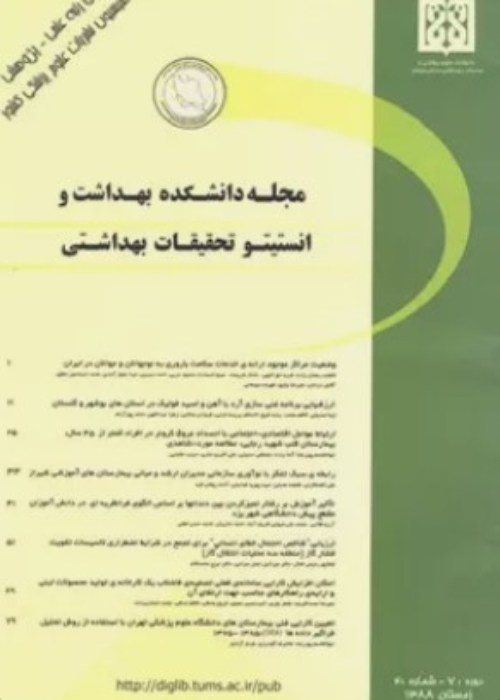Comparison of the power and statistical efficiency of case-control and case-only designs in estimating the gene-environment interaction in breast cancer
Author(s):
Abstract:
Background And Aim
Limitations of the traditional methods for assessing G*E interaction- including case-control studies- led to development of several non-traditional approaches. This study aims to assess the interaction between the genetic background (history of breast cancer in first degree relatives) and environmental influences (reproductive/menstrual factors) in patients with breast cancer; we also compare the statistical efficiency and power of case-control and case-only designs in this setting. Materials And Methods
In a matched case-control study in Mazandaran province (Iran), 250 incident biopsy-proven cases of breast cancer and 250 age-matched neighbor controls were interviewed. History of breast cancer in mother and/or sister(s) was taken as a surrogate measure of genetic predisposition, while age at first birth, parity, breast feeding, age at menarche and irregular menstruation were considered as relevant environmental factors. For the matched case-control design, we used a conditional logistic regression model to examine main effects and the G*E interaction. In the case-only design, logistic regression analysis was applied to obtain an estimate of G*E interaction, after checking for the independence assumption. We also calculated the power for detecting the interaction by matched case-control and case-only analyses. Results
Age at first delivery did not meet the assumption of independence (p=0.02), and so was not included in the case-only analysis. No statistically significant interaction effect was seen in the case-control analysis, while case-only analysis showed significant negative interaction between disease in first-degree relatives on the one hand and parity and breast feeding on the other. We also detected a significant positive interaction between genetic predisposition and age at menarche. All the estimated 95% confidence intervals for OR in G*E interactions were narrower in the case-only analysis. For all factors, the power for detecting G*E interaction was greater in the case-only analysis compared to the case-control analysis, with ratios ranging from 1.08 to 2.23. Conclusion
The case-only design is more efficient and powerful than the case-control design for detecting gene-environment interaction under the assumption of independence. Baseline disease risk, interactions and independent effects should be considered in using the control data for checking the assumption of independence. Considering the existence of another explanatory variable, eg. a mutant gene which may have passed unnoticed, would be the safest approach in a case-only study.Language:
Persian
Published:
Scientific Journal of School of Public Health and Institute of Public Health Research, Volume:4 Issue: 2, 2006
Page:
7
magiran.com/p371699
دانلود و مطالعه متن این مقاله با یکی از روشهای زیر امکان پذیر است:
اشتراک شخصی
با عضویت و پرداخت آنلاین حق اشتراک یکساله به مبلغ 1,390,000ريال میتوانید 70 عنوان مطلب دانلود کنید!
اشتراک سازمانی
به کتابخانه دانشگاه یا محل کار خود پیشنهاد کنید تا اشتراک سازمانی این پایگاه را برای دسترسی نامحدود همه کاربران به متن مطالب تهیه نمایند!
توجه!
- حق عضویت دریافتی صرف حمایت از نشریات عضو و نگهداری، تکمیل و توسعه مگیران میشود.
- پرداخت حق اشتراک و دانلود مقالات اجازه بازنشر آن در سایر رسانههای چاپی و دیجیتال را به کاربر نمیدهد.
In order to view content subscription is required
Personal subscription
Subscribe magiran.com for 70 € euros via PayPal and download 70 articles during a year.
Organization subscription
Please contact us to subscribe your university or library for unlimited access!


